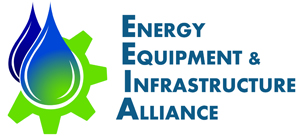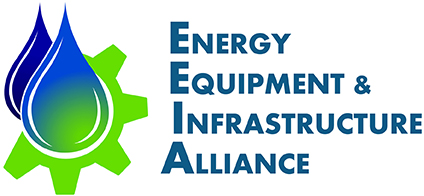|
Permitting Reform Front and Center
Amid Alarming Grid Demand Estimates May 23, 2024 This Tuesday, the Senate Energy and Natural Resources Committee, led by Chairman Joe Manchin, heard alarming testimony from grid operators and analysts that burgeoning and previously unforeseen power demand from data centers, new manufacturing, and electrification will soon overwhelm the nation's electric generating capacity, unless new energy infrastructure can be quickly added. But the bottom line is that current permitting barriers must be reformed before enough new transmission lines, natural gas generators and pipelines to supply them can be built. Without reforms needed to unlock significant new infrastructure investments, catastrophic grid failures are likely in the near term. The Senate hearing was held as a prelude to Sen. Manchin's announcement that he will introduce new reform legislation in the near future. There's word that some Senate Republicans are not completely on board, calculating it’s a better bet to wait until after the elections, hoping that potential Republican control of both houses of Congress and the White House would produce a better permitting reform package that would be more supportive of pipelines and fossil fuel generation facilities. This combined with Majority Leader Schumer declaring that permitting reform this year is "virtually impossible", and Democrat reluctance to support streamlining permitting of fossil fuel infrastructure in an election year, gives us healthy skepticism that anything truly beneficial to our sector is likely in 2024. Nevertheless, EEIA will stay closely tuned to the state of play and will jump on any opportunities to advance prospects for meaningful reform. The hearing's witness testimony was sobering, if not downright scary, about the state of our grid's decreasing ability to maintain stable and reliable service as electricity demand burgeons while capacity additions are tightly constrained by permitting logjams. Here are a few key exerpts from both witnesses and Committee members that characterize the sense of crisis prevailing throughout the hearing. To read the full scripts of witness statements from which these are drawn, click the names. Sen. Joe Manchin (D-WV) (Chairman): "Last month, the Texas grid operator revised its 2030 load forecast from last year to add 40 gigawatts of new expected load growth. That’s like adding the demand of the entire state of California to the Texas grid—six years from now! NERC’s (National Electric Reliability Council) summer assessment came out last week, and shows half the country at elevated risk of blackouts this summer..." Sen. Bill Cassidy (R-LA): "Lawsuit after lawsuit can effectively tie up something and effectively kill a project. I'd like to say that folks on the other side of the dais want powerlines, and the folks on this side want pipelines, but we really want both because we know that both are essential." Ben Fowke, President & CEO, American Electric Power Company: "Prior to 2021, the electricity demand from a large data center was approximately 200 Megawatts (MW); today it can be 1,500 MW or greater. The power demand for the AI alone is expected to grow over eightyfold from 8 Terawatt hours (TWh) in 2024 to 652 TWh by the beginning of the next decade. Processing power demand is expected to double in three years. The construction cost of generation to serve this additional demand is expected to be in the hundreds of billions of dollars. This growth is not isolated to only one part of the country. PJM, the regional transmission organization which covers thirteen states and the District of Columbia, predicted summer peak demand to increase 50% from 28 GW by 2034 to 42 GW by 2039 compared to 2024 levels. ERCOT, the regional transmission organization that serves most of the state of Texas, is also predicting significant demand growth - approximately an additional 70 GW in demand by the end of this decade, nearly doubling the demand in the entire region." Mark Mills, National Center for Energy Analytics: "Given the emerging scales of electricity demand from the cloud and AI, especially when added to the emerging demands from reshoring manufacturing and promoting EVs, it should be clear that policymakers can no longer entertain the idea of an 'energy transition'. The nation's electric sector will need full access to all options to ensure enough electricity is produced reliably, and at prices American businesses, and ultimately the public, can afford." Karen Onaran, CEO, Electricity Consumers Resource Council (ELCON): "Construction spending in manufacturing has nearly tripled since June 2020 and was up 37% year over year in January 2024 when it reached a record high of $225 billion. As a result, energy usage by the industrial sector is projected to grow by 36 gigawatts by 2030, which is the equivalent of the electricity necessary to power over 25 million homes." EEIA will continue to press the case for permitting reform. There is no alternative. The status quo will become increasingly unworkable and dangerous to all whose lives and livelihoods depend on uninterrupted and affordable access to electricity, which is every American. As always, your feedback and recommendations are sincerely appreciated. Best regards, 
Toby Mack, President EEIA (630) 399-1800 |
©2024 EEIA
If you no longer wish to receive information from EEIA, please click here to unsubscribe.
If you no longer wish to receive information from EEIA, please click here to unsubscribe.


